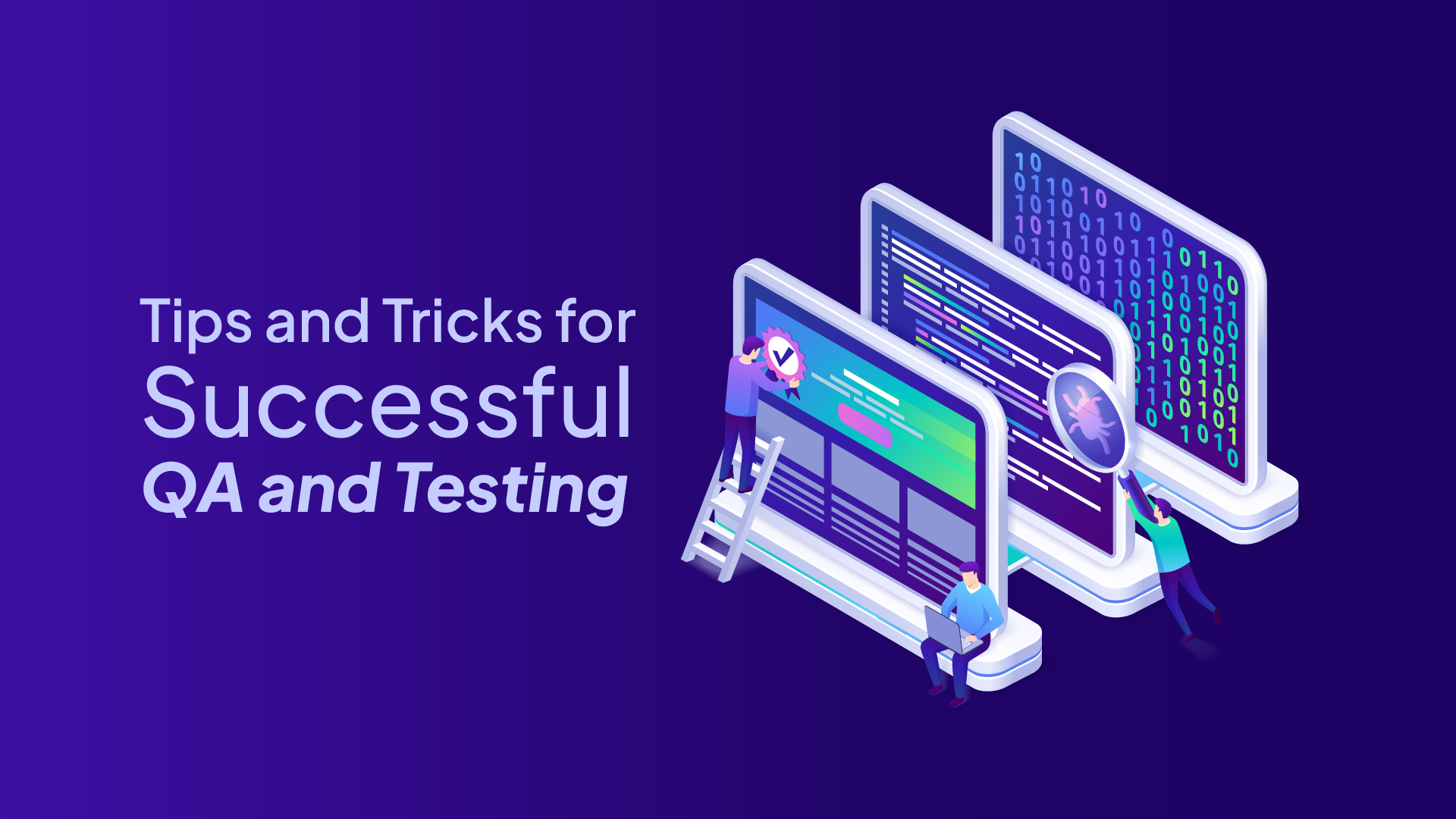Best Practices for Testing Your App: Tips and Tricks for Successful QA and Testing

Testing is not just a way of ensuring that your application meets its end users’ needs. It’s also a way of learning more about how your users interact with your app and what makes them happy or unhappy. That said, there’s no single “right” way to test, nor are there silver bullets for improving QA efforts. Instead, successful testing depends on identifying what matters most when it comes down to user experience–and then focusing on delivering those features while minimizing the impact on other parts of the product (such as development overhead)
Creating an app is a challenging process, but the hard work does not end with the development phase. Testing is equally important to ensure that the app performs as expected and is free from any bugs or issues that could negatively affect user experience. In this blog, we will discuss the best practices for testing your app to ensure it is top-notch and ready for launch.
First, let’s start with some facts and figures. According to a report by Techjury, 21% of app failures are due to poor testing, while 78% of users will delete an app if it crashes or has other technical issues. Furthermore, another report by Statista revealed that in 2020, there were over 218 billion app downloads globally, and this number is projected to increase to 258 billion by 2022. With such a large audience, it’s crucial to ensure that your app is well-tested and can provide a seamless user experience.
Now, let’s move on to some best practices for testing your app.
Do no harm
It is important to remember that your app is a living thing. It’s not a static piece of code that can be easily tested and made to perform perfectly under all conditions. Instead, it must be able to adapt as you make changes and add features over time—and these changes may break existing functionality or cause unexpected bugs in new code.
In addition to this general rule about how much testing should be done before releasing an app, there are also specific rules regarding testing for each stage of development:
Test your assumptions
Testing your assumptions is one of the best practices for testing your app. You can test your assumptions early on in the development process, and find out if they are correct. It’s important to test these assumptions with a small sample of users so that you can get a sense of how the app is being used, as well as what problems might exist with it.
If you’re only having one or two testers try out an application at a time, then there will be less communication between testers and developers. However, if everyone has access to everyone else’s work (or even just their own work), then communication becomes easier because everyone knows what everyone else is doing—and vice versa! This means that both parties know where each other stands when it comes time to make changes or additions/removals from their current project plans.”
Break the app into smaller chunks
If you’re testing a new feature, it’s important to break the app into smaller chunks. When you do this, it’s easier to identify issues and see how they affect all parts of your app.
If you have an existing feature that needs testing, break it down into smaller pieces. This will help make sure that all aspects of each element are covered in QA and testing—you won’t miss anything!
Follow the “one-at-a-time” rule
In order to write effective test cases, you must follow the “one-at-a-time” rule. A single test case should be written for each feature, type of user and device (desktop or mobile), as well as each network connection.
In general:
- One test case for each feature (e.g., “create new account”)
- One test case per type of user (e.g., “admin”)
- One test case per device type (e.g., iPhone 6s Plus running iOS 11 on Verizon LTE).
Find and fix bugs early on
Finding and fixing bugs early on is one of the keys to a successful app. Bugs can be expensive, with some costing up to $1 million in lost revenue per bug found and fixed. They also lead to increased development time, which means you’re paying more money upfront for your product—if it isn’t ready at launch then there’s little chance that anyone will buy it!
To avoid these costs, we recommend taking steps such as:
Involving QA teams early on in the development process so they have time with the code base before release so they know exactly what needs testing (and how). This helps ensure that every new feature or change has been tested thoroughly by multiple people before being added to production code.
Monitor user behaviors with MBeans, Notifications, and console logging
MBeans are a great way to monitor user behaviors. They’re lightweight, self-contained, and easy to deploy. You can use them in your configuration files or by adding them directly into your code.
Notifications are also another way to monitor user behavior, but it’s more targeted than MBeans because it only sends out messages when the app detects that something has happened. This makes notifications more useful for monitoring specific actions taking place within an application such as:
User login/logout events (iCloud sync)
Application launch/close events (iCloud sync)
Network connectivity changes like connectivity issues or network errors
Keep a journal of how your users interact with your application
You can use a journal to keep track of how your users interact with your application. The journal should be used to find and fix bugs early on, monitor user behaviors, find and fix usability issues, and generally make sure that you’re testing the right things.
Conclusion
If you’re not testing your application, isn’t it time to start? You can get more out of testing if you focus on the things that matter most. By breaking your app down into smaller pieces and following some of these tips, you can make sure that important problems are caught early and fixed before they become big issues.
Now that we have discussed some best practices for testing your app let’s move on to how TechEFolks QA and Testing services can help.
At TechEFolks, we offer a comprehensive range of QA and Testing services to ensure that your app is well-tested and ready for launch. Our team of experienced testers and QA professionals utilize the latest tools and technologies to ensure that your app performs as expected and is free from any issues or bugs.
We offer both manual and automated testing services, ensuring comprehensive testing that covers all aspects of your app. Our testing services also include testing on multiple devices and platforms, ensuring that your app works seamlessly across all devices and operating systems.










